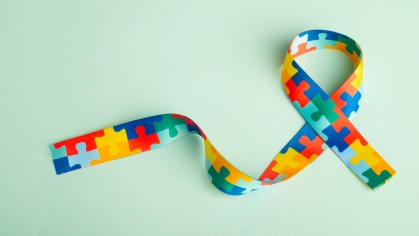We recently had the opportunity to speak with Associate Professor Lenna Nepomnyaschy about Women’s Equality Day and what Americans can do to achieve greater equality for women.
Is it still important to commemorate Women’s Equality Day?
Women’s Equality Day commemorates the passage of the 19th Amendment in 1920, giving women the right to vote, and the achievements of women’s rights activists who fiercely fought for this right. However, it is also the day when we must acknowledge the continuing struggle for women’s rights and concede that the fight for women’s equality is not only unfinished, but is actually being turned back in many places in the United States.
In what ways do women remain unequal in the US?
Let’s start with the gender pay gap. There is another important day that comes every year, though not one we generally celebrate, called the Equal Pay Day – the day that women earn the same amount of money that men made in the prior year. This past year, Equal Pay Day was March 24, 2021, reflecting that the average US woman had to work 3 months longer to make what the average US man earned in the previous year. Women on average earn 82 cents for every $1 a man earns, and this gap persists, even though women today are more likely than men to complete high school, college, and graduate school. Even more alarming, this overall gender pay gap hides tremendous disparities by race and ethnicity. Equal Pay Day for Black women was August 3, 2021, and for Latina women it will be October 21, 2021.
Why do women earn less than men?
There are a number of interrelated factors that have been identified. First, is the difference in the types of jobs and industries that men and women work in, referred to as occupational segregation. In general, jobs dominated by women (e.g., home health care and child care) offer much lower pay than jobs dominated by men (e.g., construction and trucking). However, even within the same job and those with equal representation by sex (e.g., retail workers and managers), men earn much higher wages than women. This points to two other factors: differences in men’s and women’s years of experience and hours worked, and just pure discrimination. All of these factors are inextricably tied to motherhood and, because of discrimination, they impact all women, regardless of whether they have children. Specifically, to women’s unique role in childbearing; to societal expectations that women will bear the burden of childrearing; and to the unique failure of the US, among all other wealthy nations, to enact social policies that support families with children, such as: parental leave, affordable and high quality childcare and early education programs, and child allowances.
How do these inequalities affect women and their families?
It is certainly not surprising that women in the US are much more likely than men to be poor and to experience material hardship, such as evictions, food insecurity, and many other types of economic precarity. Additionally, half of children will spend some time living with just one of their biological parents, in most cases their mother, and thus children are the most at risk of being exposed to all of these adverse experiences. And again, overall figures mask very large disparities by race and ethnicity. In 2019, prior to the pandemic, 17% of non-Hispanic white children were poor, compared to 31%, 30%, and 23% of American Indian, Black, and Hispanic children, respectively. Even more alarming, as the pandemic disproportionately affected women, with both job and wage losses and illness, food insecurity among families with children has skyrocketed. In December of 2020, nearly one quarter of all families with children reported food insecurity, while the number for Hispanic and Black families was a staggering 40%.
How do we think about all these issues with regards to Women’s Day of Equality?
That’s a great question and brings me back to where we began. Women’s Day of Equality commemorates the passage and enactment of women’s right to vote. Several factors are coming together to dangerously erode women’s overall equality and their right to vote. First, as pointed out earlier, the lack of social policies in the US to support families with children puts a tremendous economic burden on women and their families. The constant and unrelenting stress from trying to survive and provide for children certainly makes civic engagement and democratic participation complicated. But, even more importantly, since the 2020 election, in which Democrats won the presidency, the House of Representatives, and the Senate, undeniably because of the support of women, and primarily Black women, Republican lawmakers in 47 states have introduced 361 bills to restrict, limit, and suppress the right to vote. Bills include provisions such as reducing voting hours, limiting early voting, making it more difficult to vote by mail, and making it illegal to provide food and water to voters waiting in line. There is no denying that these restrictions are a direct affront to the right to vote and the ability to participate in our democracy for all women in the US.
What can we do?
Working for social change to improve the lives of those who are vulnerable, oppressed, and living in poverty is a core tenet of the social work profession. Thus, advocating and fighting for policies that address racism, discrimination, low wages, poverty, and lack of access to healthy food, affordable and stable housing, and high quality education and health care are the first steps. And because the enactment of such policies is inherently a political process, social workers must vote, advocate, and fight for policies that expand voting rights and increase access to participation in the democratic process for all Americans. The US House of Representatives has passed the For the People Act (H.R. 1), which will expand voting access, codify these rights into federal law, and override and thwart almost all of these state-level voting restrictions. However, the bill is now in the Senate, where it has little chance of passing without major changes to Senate rules. As we commemorate Women’s Equality Day, now is the time to contact your federal representatives to let them know how important enacting this legislation is to promote and protect the rights and equality of all women across the United States.
Links from the text above:
- https://www.washingtonpost.com/graphics/2017/business/women-pay-gap/?utm_term=.f58139af08e8
- http://www.equalpaytoday.org/overview-2021
- https://nces.ed.gov/programs/digest/d19/tables/dt19_104.10.asp?current=yes
- https://www.americanprogress.org/issues/women/reports/2020/03/24/482141/quick-facts-gender-wage-gap/
- https://www.washingtonpost.com/graphics/2017/business/women-pay-gap/?utm_term=.f58139af08e8
- https://datacenter.kidscount.org/data/bar/44-children-in-poverty-by-race-and-ethnicity?loc=1&loct=1#1/any/false/1729/10,11,9,12,1,185,13/323
- https://www.urban.org/research/publication/forty-percent-black-and-hispanic-parents-school-age-children-are-food-insecure
- https://www.nbcnews.com/know-your-value/feature/how-women-voters-decided-2020-election-ncna1247746
- https://www.brennancenter.org/our-work/research-reports/voting-laws-roundup-march-2021
- https://www.socialworkers.org/About/Ethics/Code-of-Ethics/Code-of-Ethics-English
- https://votingissocialwork.org/
- https://www.brennancenter.org/our-work/research-reports/congress-could-change-everything?ms=gad_h.r.%201%20bill%202021_507876502023_8626214133_122641513187&gclid=CjwKCAjwhYOFBhBkEiwASF3KGd3-9smD93CIdk3E6an4j_eq-mNcjD5Ohv3tYce9SA1recZz-Pkk_RoC1pwQAvD_BwE
- https://www.commoncause.org/find-your-representative/addr/
This story was created in partnership with Rutgers School of Social Work's Inclusion, Intersectionality, Diversity, Equity, and Advancement (IIDEA) Committee in support of our commitment to diversity, equity, and inclusion.



